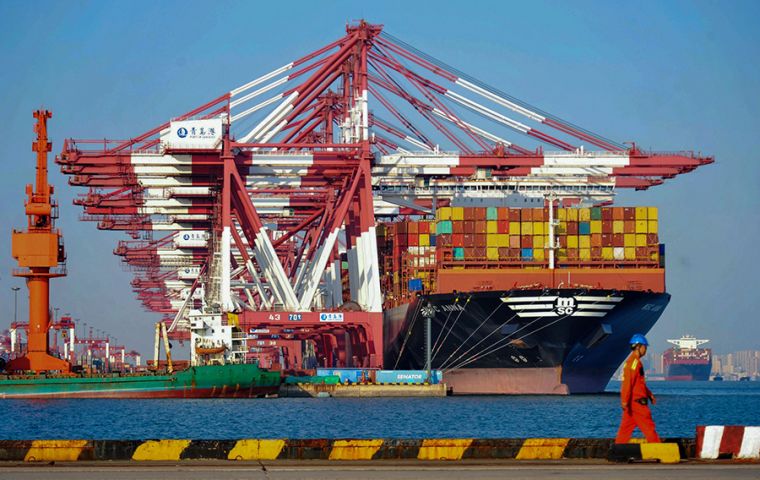MercoPress. South Atlantic News Agency
Global trade forecasted to remain “below trend” in fourth quarter, WTO
 In September, WTO economists downgraded their trade growth expectations for 2019 to 1.2%, down from the 2.6% forecast in April
In September, WTO economists downgraded their trade growth expectations for 2019 to 1.2%, down from the 2.6% forecast in April The World Trade Organization said on Monday that growth in global goods trade is expected to remain “below trend” in the fourth quarter amid tensions and rising tariffs in key sectors.
World merchandise trade is expected to remain below trend into the fourth quarter of 2019, according to the WTO’s latest Goods Trade Barometer. The indicator’s reading of 96.6 marks a slight improvement compared to the 95.7 registered in August, but it remains well below the index’s baseline value of 100, signaling below average growth.
The Goods Trade Barometer provides “real time” information on the trajectory of world merchandise trade volumes relative to recent trends. Some components of the barometer have stabilized since the last reading in August, while others remain on a downward trajectory reflecting heightened trade tensions and rising tariffs in key sectors.
Indices for export orders (97.5), automotive products (99.8), and container shipping (100.8) have firmed up into on-trend territory. However, the indices for international air freight (93.0), electronic components (88.2), and raw materials (91.4) have all deteriorated further below trend. Electronic components trade was weakest of all, possibly reflecting recent tariff hikes affecting the sector.
Official data confirm the loss of momentum in goods trade foreseen by the Goods Trade Barometer earlier this year. According to the latest WTO quarterly trade volume statistics, merchandise trade rose by only 0.2% year-on-year in the second quarter of 2019, compared with 3.5% in the same quarter of last year.
In September, WTO economists downgraded their trade growth expectations for 2019 to 1.2%, down from the 2.6% forecast in April. They attributed this substantial deceleration to slowing economic growth, increased tariffs, Brexit-related uncertainty, and the shifting monetary policy stance in developed economies.
Like its counterpart for services, the Goods Trade Barometer aims to gauge momentum and identify turning points in global trade growth. As such, it complements trade statistics and forecasts from the WTO and other organizations. Readings of 100 indicate growth in line with medium-term trends; readings greater than 100 suggest above-trend growth, while those below 100 indicate below-trend growth.




Top Comments
Disclaimer & comment rulesCommenting for this story is now closed.
If you have a Facebook account, become a fan and comment on our Facebook Page!